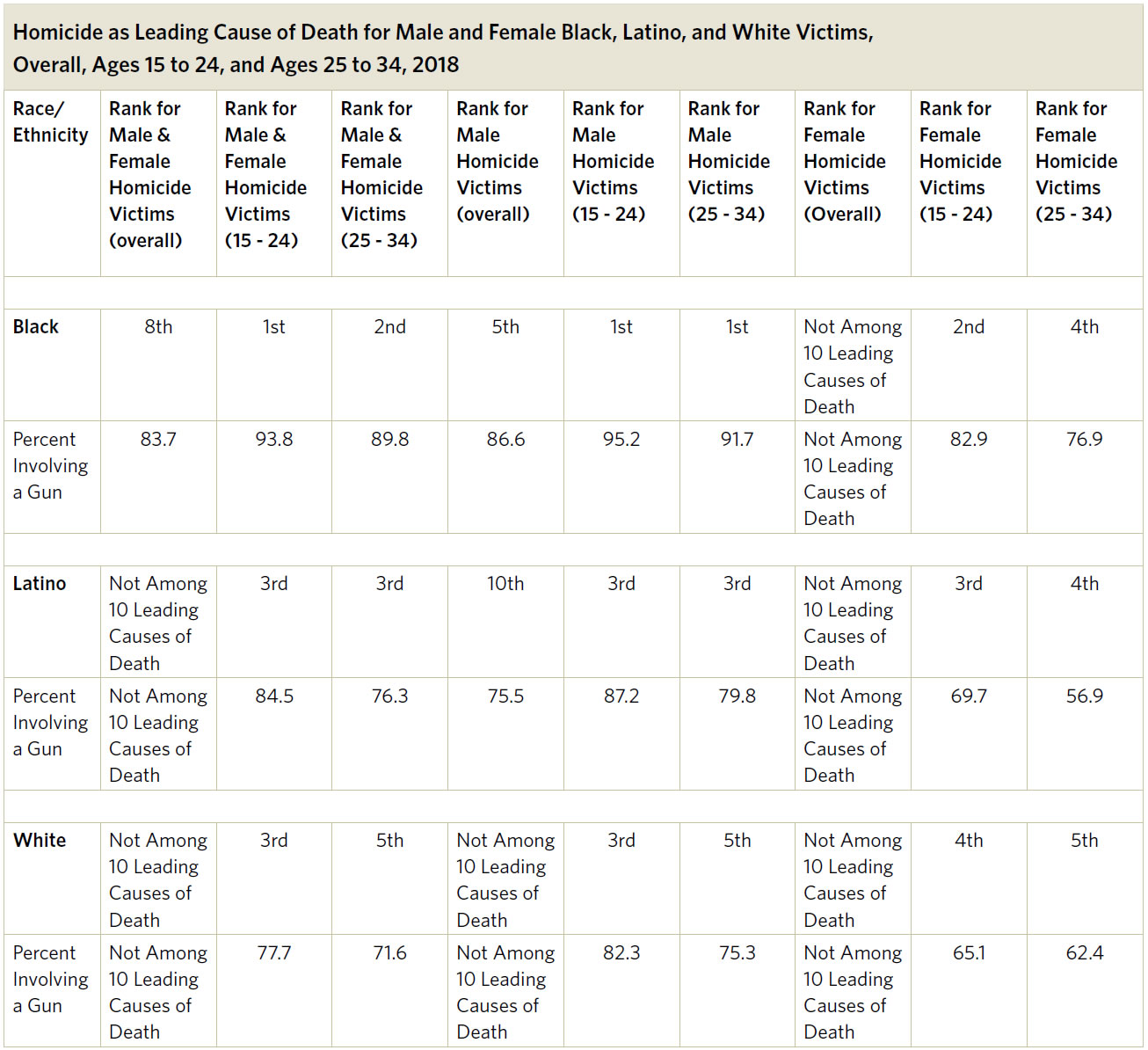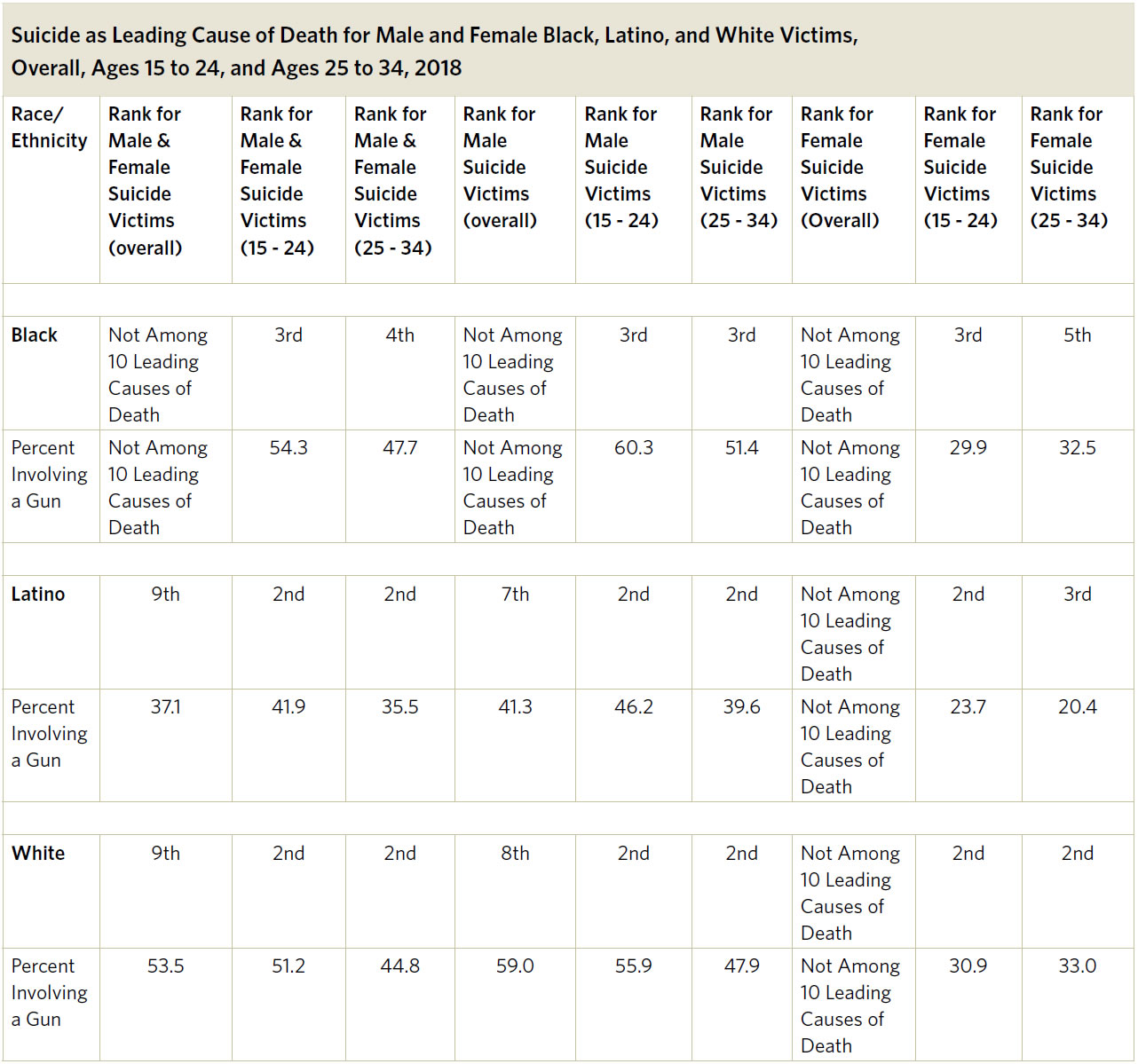Section Four: The Reality of Black and Latino Americans and Guns
Not surprisingly, the firearms industry and its financial partners in the National Rifle Association never acknowledge the harm guns inflict on our nation, and on communities of color in particular. In 2018 alone, nearly 40,000 lives were lost in gun homicides, suicides, and fatal unintentional shootings. And while gun death and injury affects all Americans, its impact does not fall evenly. Blacks and Latinos are more likely to be victims of gun homicide, while gun suicide has a greater impact on white Americans.

In 2018, the most recent year for which data is available from the Centers for Disease Control and Prevention, guns claimed 9,801 Black lives at a rate of 22.83 deaths per 100,000. That same year, guns claimed 4,018 Latino lives at a rate of 6.71 per 100,000 and 24,789 white lives at a rate of 12.33 per 100,000. The Black gun homicide victimization rate of 18.61 was more than 11 times the white gun homicide victimization rate of 1.66 per 100,000. The Latino gun homicide victimization rate of 3.66 per 100,000 was more than twice the white gun homicide victimization rate. While only 13 percent of the U.S. population, Blacks represented more than half of all gun homicide victims.

In 2018, the Black male gun homicide victimization rate of 34.22 per 100,000 was five and a half times the Latino male gun homicide victimization rate of 6.22 per 100,000 and more than 14 times the white gun homicide victimization rate of 2.40 per 100,000.
For that year, the Black female gun
homicide victimization rate of 4.24 per 100,000 was four times the Latina female
gun homicide victimization rate of 1.05 per 100,000 and four and a half times the
white female gun homicide victimization rate of 0.94 per 100,000.

In 2018, guns were used in: 54.2 percent of Black male suicides and 27.9 percent of Black female suicides; 41.3 percent of Latino male suicides and 20.1 percent of Latina female suicides; and, 59 percent of white male suicides and 34.0 percent of white female suicides.
In 2018, homicide was the leading cause of death for Black males ages 15 to 24 (95.2 percent involving guns) and ages 25 to 34 (91.7 percent involving guns). For Black females, homicide was the second leading cause of death for victims ages 15 to 24 (82.9 percent involving guns) and the fourth leading cause of death for victims ages 25 to 34 (76.9 percent involving guns).
That same year, homicide was the third
leading cause of death for Latino males ages 15 to 24 (87.2 percent involving a
gun) and 25 to 34 (79.8 percent involving a gun). For Latina females, homicide
was the third leading cause of death for victims ages 15 to 24 (69.7 percent
involving guns) and the fourth leading cause of death for victims ages 25 to 34
(56.9 percent involving guns).

In 2018, suicide was the third leading cause of death for Black males ages 15 to 24 (60.3 percent involving guns) and ages 25 to 34 (51.4 percent involving guns). For Black females, suicide was the third leading cause of death for victims ages 15 to 24 (29.9 percent involving guns) and the fifth leading cause of death for victims ages 25 to 34 (32.5 percent involving guns).
That same year, suicide was the second leading cause of death for Latino males ages 15 to 24 (46.2 percent involving guns) and 25 to 34 (39.6 percent involving guns). For Latina females, suicide was the second leading cause of death for victims ages 15 to 24 (23.7 percent involving guns) and the third leading cause of death for victims ages 25 to 34 (20.4 percent involving guns).

Back to Table of Contents
Next – Section Five: The Myth of Self-Defense Gun Use






